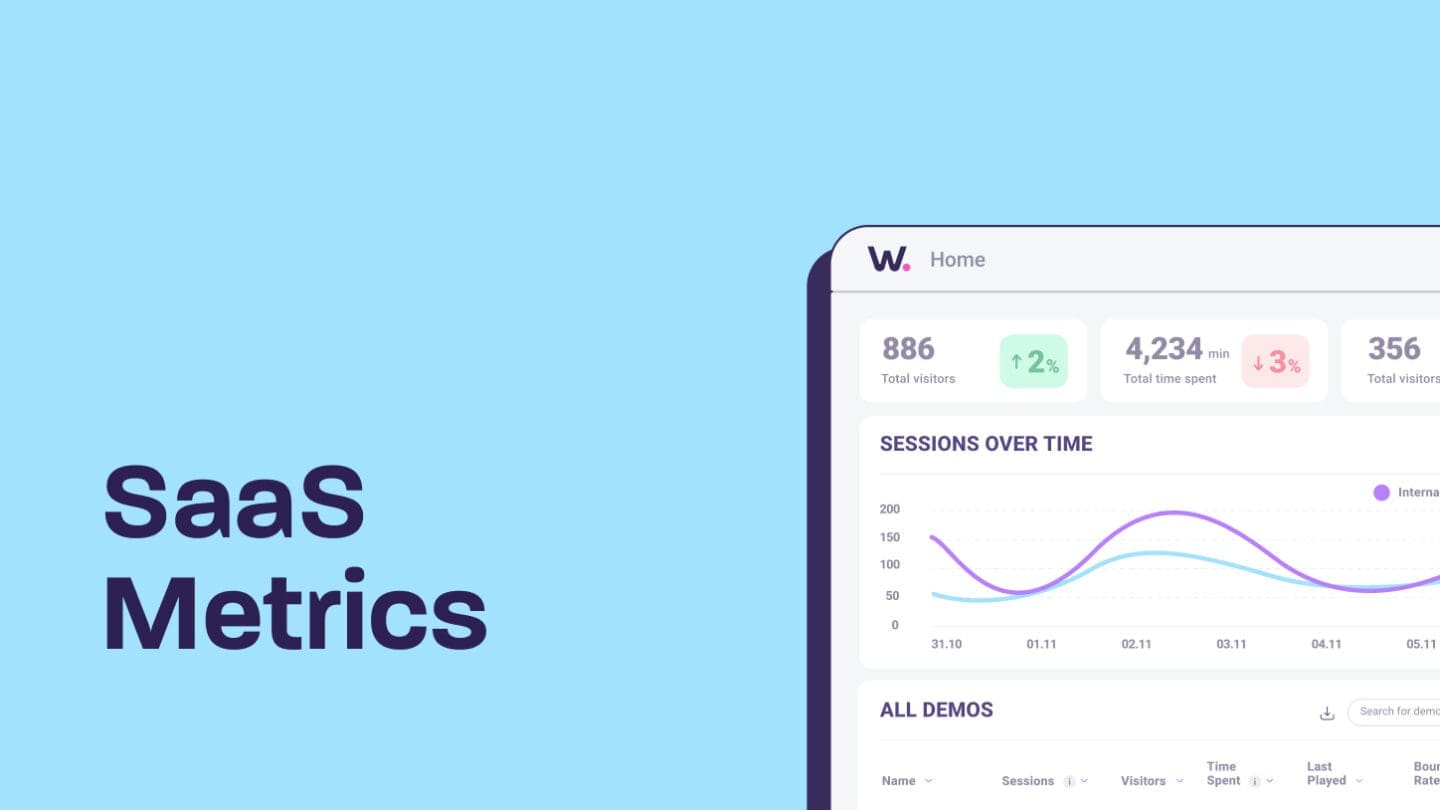Picture this—you’re living in a world where your product doesn’t matter.
WHAT?
We know we just said something pretty controversial. Let us explain.
When it comes to sales, it isn’t always easy to sell the product itself, especially if it isn’t something tangible. Sure, you can list all of its amazing features, but that doesn’t show the prospect why they need to have your product.
This idea of explaining the concept of a product and why it’s something a prospect should want is what the Conceptual Selling sales methodology is all about.
When done right, this approach to B2B SaaS sales can help go-to-market (GTM) teams improve prospect engagement, qualify sales leads, and ultimately, close deals.
In this article, we’ll discuss what Conceptual Selling entails and outline how you can implement this technique into your current sales approach.
- Conceptual Selling definition
- What does it mean to "sell a concept"?
- Benefits of the Conceptual Selling technique
- Who is Conceptual Selling right for?
- Conceptual Selling vs. other techniques
- 8 best tips to nail your Conceptual Selling technique
- Focus on the concept, not the product
- Use personalized and interactive product demos
- Look for the win-win scenario
- Be conscious of two-way processes
- Make it simple
- Listen to the prospect
- Understand motives to buy
- Ask questions
- Conceptual Selling questions
- Discovery questions
- Problem questions
- Attitude questions
- Commitment questions
- How product demos can enhance Conceptual Selling methodology
Conceptual Selling definition
First, let’s break down what Conceptual Selling is.
Miller Heiman Conceptual Selling is a methodology that emphasizes the desired outcome, or the concept, rather than the product itself.
Who came up with this strategy? You guessed it—Robert Miller and Stephen Heiman.
The two argue that the reason this methodology is effective is because people do not buy a product. Instead, they buy the concept for the solution it offers.
To use Conceptual Selling effectively, reps need to listen to the prospect in order to understand what customers feel are their biggest pain points and challenges. The sales rep is then tasked with relating the SaaS service or product to the defined concept.
This approach can be very effective since it satisfies the prospect’s needs and focuses on solving the issues they might have.
It does, however, require sales reps to have in-depth knowledge of the product and be able to translate that when pitching to a prospect.
What does it mean to “sell a concept”?
That’s the definition, but what does it actually mean to “sell a concept”?
We hoped you’d ask that very question!
Here’s a quick example to help explain the concept of Conceptual Selling. (Concept-ion inception!)
Imagine walking into a store and being told that a particular product can solve all your laundry needs. The product cleans, dries, and irons your clothes; all you have to do is turn it on.
The focus isn’t on the product itself, but rather the concept of the product and all the benefits the customer can get from the product.
Essentially, what the product is and what it looks like are less important. All that matters is why the customer must have the product.
This is the key idea behind Conceptual Selling.
Reps will explain why the product is desirable without getting into the nitty gritty of the product’s features.
Benefits of the Conceptual Selling technique
In essence, the Conceptual Selling technique is a customer-centric, listen-first approach.
And this kind of strategy can help increase the likelihood that customers will stay for longer because they understand the concept and why the product works for them.
Here’s a few additional benefits of the approach:
- A shorter sales cycle
- Higher closing ratio
- A more productive sales team
- Stronger customer relationships based on a solid foundation
- An improvement in the average deal size
Who is Conceptual Selling right for?
We went over the basics of this strategy, but who should really use it?
Conceptual Selling is a helpful strategy for sales pros across a variety of industries.
However, some companies can benefit from Conceptual Selling more than others. For example, Conceptual Selling can be very effective when selling SaaS because it’s often more difficult to describe what the “product” actually is.
This is not to say physical products can’t be sold with this methodology. But it does come in especially handy in cases when you’re selling SaaS.
It is also more helpful for B2B companies because the B2B SaaS sales process is all about building relationships and typically has longer decision cycles. And Conceptual Selling is focused on building strong relationships with customers that will hopefully stay onboard for a long time.
Conceptual Selling vs. other techniques
Sandler Selling, Gap Selling, MEDDIC sales process—the list of sales methodologies goes on and on. But what sets Conceptual Selling apart?
Conceptual Selling is unique compared to other methods as it is centered around the idea that buyers are more likely to buy into concepts of solutions rather than actual goods or services.
On top of this, it focuses more on meeting the prospect’s needs instead of just selling your SaaS product.
And most importantly, every deal should benefit both the prospect and the sales rep.
8 best tips to nail your Conceptual Selling technique
If you decide that Conceptual Selling is right for you and want to give it a try, here are some tips that can help you put this methodology into practice.
1. Focus on the concept, not the product
Instead of describing a product and its features, show the prospect how the product will solve a need. For example, if you are selling something like a cybersecurity product, you can focus on how valuable it is to protect your digital identity.
It helps to center your B2B sales pitch around problem-solving instead of selling the product’s main features.
2. Use personalized and interactive product demos
When you use a demo experience platform (like Walnut, for example) to make personalized and interactive product demos, it’s much easier to explain how your product can address specific pain points.
Most importantly, through a sales demonstration guide, you can show prospects why they need to have your product, as opposed to telling them. And this can help them understand the product’s value earlier, shortening the length of the sales cycle.
3. Look for the win-win scenario
Conceptual Selling comes down to pinpointing a win-win scenario for the buyer and the seller.
Many reps are solely focused on closing as many deals as they can. But this may cause reps to come off as overbearing and like they’re imposing their will over the prospect.
In the long run, this kind of approach can negatively affect a business’s retention rate, churn rate, and other SaaS metrics that underpin how long a customer stays with you.
Conceptual Selling methodology is all about finding a compromise where the wants of the buyer and the seller align. So, instead of focusing on how to win the sale, try to determine what the buyer’s needs are. Then, explain how your product will be an effective way to meet these needs.
4. Be conscious of two-way processes
Remember, reps shouldn’t just sell their product; they also need to help buyers buy.
This concept of guiding buyers through the buying process is also known as buyer enablement.
To assist buyers during the buying journey, reps can provide data to help prospects make decisions, demonstrate how a particular product will address the customer’s specific needs, and offer any additional support.
When reps understand that these processes need to exist simultaneously and find a way to align each party’s interests, it goes a long way in getting deals done.
5. Make it simple
Simple sells.
Reps interact with several prospects on the daily. So, it’s helpful to establish simple workflows that can be used for different parts of the sales process like sales discovery calls, prospecting, and sales demos.
Having a set routine that’s defined and documented will help you and your team improve the efficiency of your sales strategy.
6. Listen to the prospect
The Conceptual Selling approach emphasizes listening to prospects more than anything else.
This is a 180 from past approaches as sales reps used to learn how to talk rather than listen, with how well the pitch went being the main concern.
To thoroughly grasp the prospect’s perspective on their difficulties and challenges, the salesperson needs to start by listening. Then, reps should explicitly connect the SaaS product or service to that idea.
7. Understand motives to buy
Why does listening play such a crucial role in Conceptual Selling? Because the prospect’s perception of the problems their business is dealing with is the justification for purchasing your product.
For sales reps who are used to outlining product benefits right off the bat, there may be a learning curve (or unlearning curve) when getting started with Conceptual Selling.
But trust us, by understanding prospects’ challenges, you’ll be better able to show why they can’t live without your product.
8. Ask questions
Plain and simple, you can’t learn everything you need to know about the prospect without posing the right questions.
As a result, Conceptual Selling is built around asking thoughtful questions. These questions are used for getting information, providing information, and obtaining a commitment.
We recommend asking questions that fall into the following five categories:
- Confirmation questions: To verify the information.
- New information questions: To increase the prospect’s understanding of the item or service and learn about their goals.
- Attitude questions: To learn more about a prospect’s personality and what type of prospect they are.
- Basic issue questions: To spot any potential issues or roadblocks to a deal.
- Commitment questions: To find out about a prospect’s budget.
Conceptual Selling questions
So, what specific questions should you be asking? Glad you asked!
Based on the different stages of Conceptual Selling, we’ve outlined some of the questions you should ask.
Discovery questions
During the discovery phase, you’ll want to ask questions that help you start the conversation and get basic information.
Here’s a few examples to show you what we mean:
- How much time do you spend on X task?
- What kinds of resources do you spend on X task?
- How long have you been working in this industry?
- For the upcoming quarter (and year), what are your objectives?
Problem questions
Now we need to get to the root of the issue.
To do this, you can ask questions like:
- Is there anything that’s preventing you from expanding your capabilities?
- What is your biggest challenge when it comes to achieving your goals?
- How much time/money do you waste on X task?
- What would help make your workflow more efficient?
Attitude questions
When it comes to attitude questions, they can help you understand the prospect’s decision-making process and offer an opportunity to answer their questions.
There are a few that we recommend asking at this point in the process:
- What do you think about using a new product for X task?
- Would you be open to collaborations?
- How soon would you implement a change in your workflow?
- What is your budget for addressing X challenge?
Commitment questions
When it comes time to see if your prospect is ready to sign on the dotted line, there are a few questions that can help you guide them towards the finish line:
- What is your timeline for making a decision?
- What other information do you need to make a decision?
- Are there any other decision-makers that need to see a demo?
How product demos can enhance Conceptual Selling methodology
At the end of the day, Conceptual Selling comes down to, you guessed it—selling a concept. And what better way to show how life-changing the concept of your product can be than with product demos.
Demo experience platforms (like maybe Walnut) enable you to create compelling, engaging, and interactive demos that help showcase the idea you are selling.
Product demos also offer the immersive experience prospects need to learn more about the concept behind your SaaS product and why they need it.
By creating interactive product demos to show prospects why they need to have your product, you’ll be well on your way to closing more deals.
So what’s holding you back? Push the “Get Started” button at the top of your screen to start improving your SaaS sales today.



